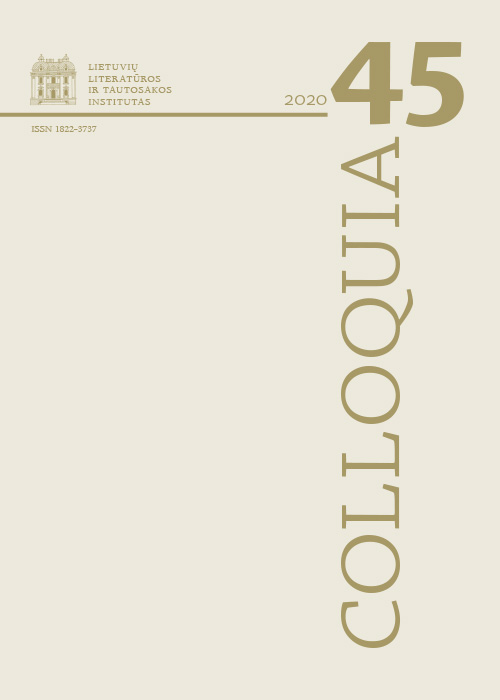Primal Images of a Peaceful Being: Tracing a Novel (Works by Alfonsas Nyka-Niliūnas and Adalbert Stifter)
Abstract
The aim of the article is to examine the longing for a “peaceful being” identified in the works of the 20th-century Lithuanian writer Alfonsas Nyka-Niliūnas and to explore his literary sources. The focus is on the novel Der Nachsommer (1857) [Indian Summer] of the 19th-century Austrian writer Adalbert Stifter, which Nyka-Niliūnas constantly mentions in his diaries. The author of the article also introduces the most important observations by the German / Austrian literary critics about the novel on this subject. From a comparative point of view, the author elaborates on the aspects that are close to the worldview of both Stifter and Niliūnas. Finally, she talks about the history of reception of Stifter’s works mentioned in Niliūnas’s diaries.
Stifter’s novel depicts a closed, calm, and „storm-free“ world deliberately created by an individual. In this respect, Niliūnas’s works depict a clear connection between the space of the childhood home and loved ones, providing a sense of security and the importance of consistency and daily monotony that ensures a sense of stability. The relationship with the reality of things in the writers’ works differs: Stifter experiences the positivist closeness to reality, whereas Niliūnas’s works are characterized by the sensory and ontological being.
In terms of time, Niliūnas puts his own twist on a safe nest of existence. He perceives the change of the seasons and their turnover as a measure of the stability of existence. The poet stops / restores the flow of time by remembering and by layering the segments of time. In this way, the time revolving around the circle of nature, or the circle of memories ensures the sustainability of the personal world. Stifter’s “Rosenhaus” is an idyllic place where a person goes through a thorough process of self-education (the novel is considered a Bildungsroman).
Niliūnas recognizes in Stifter’s novel the importance of selfdevelopment. In silent solitude, to set off purposefully to the worlds of art and philosophy had been poet's main frame of mind through his entire life. Like Stifter, Niliūnas uses intertextual substitutions and cultural plots.
It is probable that with the outbreak of war in Europe and the collapse of stability, to Niliūnas, the connoisseur of books, Stifter’s novel was personally a very significant discovery, becoming one of the pillars of his worldview. The author of the article concludes that Niliūnas was affected by the conceptual layer of the Stifter’s novel—the revolving of the ontologically safe existence.
Downloads
Most read articles by the same author(s)
- Rita Tūtlytė, An Attempt to Reconstruct the Generation of Žemininkai: Benediktas Labėnas , Colloquia: Vol. 49 (2022)
- Rita Tūtlytė, “To Realize the Grace of Being on One’s Only Earth” , Colloquia: Vol. 52 (2023): Colloquia
- Rita Tūtlytė, Greimas’ Criticism and Criticism of Greimas , Colloquia: Vol. 44 (2020)
- Rita Tūtlytė, The Prose of Marius Katiliškis: Artistic Contours of the Monistic Worldview , Colloquia: Vol. 34 (2015)
- Rita Tūtlytė, About the Exact Confluence of Words: Translations and Evaluations of Judita Vaičiūnaitė’s Poetry , Colloquia: Vol. 39 (2017)




